While we might call it Earth, from space, it’s the Blue Planet, with oceans and seas covering 71% of its surface. These aren’t just vacant zones that divide the continents we populate—the Earth’s seas and oceans are home to as much as 50-80% of all life on Earth. They are also essential to the planet’s climatic systems, controlling temperatures, rainfall, land fertility, and much more. Without our oceans, life as we know it wouldn’t exist.
In this Remitly article, you can learn the difference between oceans and seas, and find out about the major ones that shape our planet. Discover the impact they have on the Earth’s climate and the world’s economy, and learn about the fascinating ecosystems that thrive below the surface. We’ll also share what you can do to help protect our oceans and seas for future generations.
What’s the difference: oceans vs. seas
Oceans are vast bodies of water that connect and separate Earth’s continents. Historically, four were named: the Pacific, Atlantic, Indian, and Arctic Oceans. The Southern Ocean, sometimes called the Antarctic Ocean, was only proposed in 2000 and is now officially recognized by most authorities as the fifth.
Meanwhile, seas are smaller bodies of saltwater, usually partly enclosed by land but connected to an ocean. The Mediterranean Sea, for example, links Europe, Africa, and Asia and contains smaller seas like the Adriatic and Ionian.
Each sea is unique. Some, like the Irish Sea, are mostly enclosed, while others, like the Arabian Sea, open directly into the ocean. Because of these differences, there’s no single official agreement on the number of seas in the world.
Lakes, by contrast, are enclosed bodies of freshwater not connected to the ocean. Some are massive, like Lake Superior in North America. The 150,000-square-mile Caspian Sea is saltwater, but it’s landlocked, so it’s considered the world’s largest lake.
The five great oceans that define our world
Pacific Ocean: the mighty giant
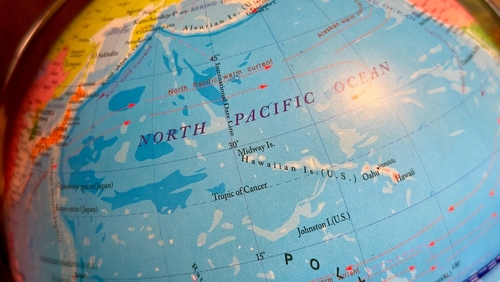
The Pacific Ocean is the largest and deepest ocean on Earth. It stretches from the Americas to Asia and Australia and contains more than 25,000 islands, including Hawaii. Encircled by the “Ring of Fire,” a tectonic zone with around 900 volcanoes, it’s linked to most of the world’s earthquakes.
Covering 63.8 million square miles—32% of the Earth’s total surface—the Pacific has an average depth of around 4,000 meters, and its deepest point is at just under 11,000 meters. Its waters are diverse, with surface temperatures ranging from 29.5 °F (-1.4°C) near the poles to 86°F (30°C) near the equator.
The movement of these waters through the ocean’s currents has a significant effect on global weather patterns. For example, when warm water moves eastwards, it triggers El Niño, causing heavy rainfall in some areas of the Americas and droughts in Australia, and La Niña, which often has the opposite effects.
Atlantic Ocean: the historical highway
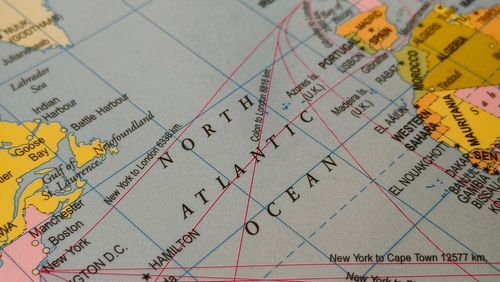
The Atlantic Ocean, an S-shaped basin between the west coast of the Americas and the east coast of Europe and Africa, covers 32.9 million square miles, about 17% of the Earth’s surface. It’s the key channel between Europe, Africa, and the Americas, so it had a central role to play in European exploration and colonization.
The Atlantic can be divided into northern and southern regions, with the south maintaining warm temperatures year-round and the north fluctuating seasonally. This water is transported by the Atlantic Meridional Overturning Circulation (AMOC) system, which carries warm water northwards from the tropics and colder water southwards. This flow shapes regional climates, keeping parts of Northern Europe ice-free while cooling areas further south.
Indian Ocean: the warm waters
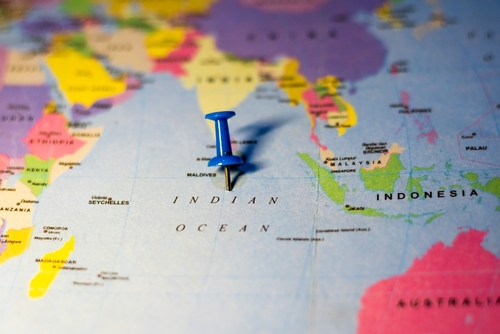
The Indian Ocean, bordered by Africa, Australia, and Asia, covers 27.2 million square miles. It’s the world’s warmest ocean—and it’s getting warmer. Scientists estimate it has already warmed more than 1°C in the past century, with further increases expected this century.
It’s the warmth of the Indian Ocean that creates the monsoons that characterize South and Southeast Asian environments. The region is home to coral reefs, seagrass beds, and mangrove forests, which support rich biodiversity and produce much of the world’s tuna and shrimp. However, warming temperatures threaten species such as green sea turtles, humpback dolphins, and dugongs.
Arctic Ocean: the frozen cap
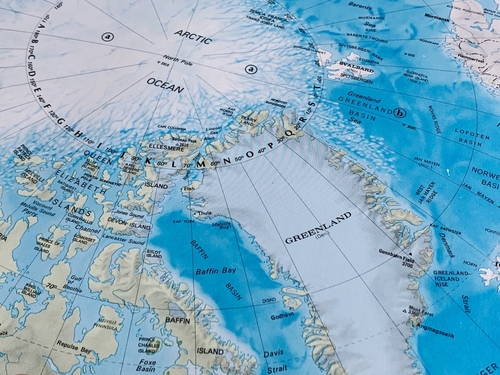
The Arctic is the world’s smallest and shallowest ocean, covering 5.4 million square miles around the North Pole. The ocean freezes into a large slab of sea ice, which expands and contracts. Climate change has dramatically reduced this ice—summer coverage dropped by 49% between 1979 and 2000, contributing to rising sea levels. Experts predict that the summer ice could disappear for the first time in human history by 2040, potentially affecting global sea currents and disrupting ecosystems.
The Arctic Ocean is also a focus of international competition over its untapped resources. It’s believed to hold more than 25% of the world’s undiscovered oil and gas.
Southern (Antarctic) Ocean: the icy frontier
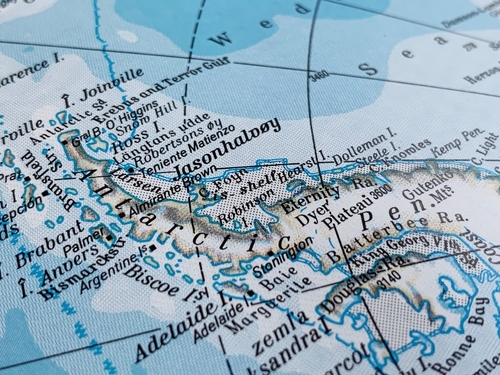
The Southern Ocean surrounds Antarctica and is defined by the powerful Antarctic Circumpolar Current, which moves water perpetually eastward around the Antarctic continent. In 2000, the International Hydrographic Organization proposed it as a distinct ocean, and it was recognized by NOAA and the National Geographic Society in 2021. Its icy waters play a critical role in regulating global climate by driving deep ocean circulation and storing vast amounts of carbon.
Remarkable seas and their special features
You might have heard of the “Seven Seas,” a phrase used since ancient times to refer to different sets of important waterways. The number was considered sacred and to represent completeness. Over time, it came to symbolize the seas and oceans in general. To celebrate this timeless phrase, let’s look at seven of the world’s best-known seas.
1. Mediterranean Sea
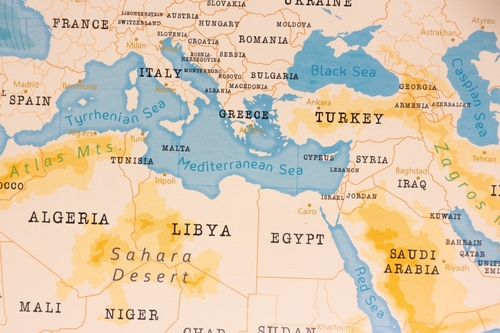
The Mediterranean Sea was the blue heart of the classical world, connecting Europe, Africa, and Asia. It encouraged cultural exchange between ancient civilizations such as the Egyptians and Phoenicians, and enabled broad, connected societies such as the Roman Empire.
2. Red Sea
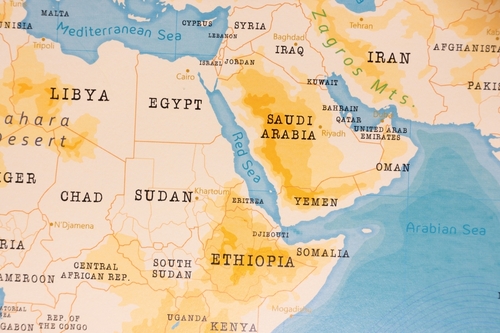
The Red Sea is an inlet of the Indian Ocean that separates Africa and Asia. It’s a major trading route connecting the Mediterranean Sea with the Indian Ocean through the Suez Canal, via the Gulf of Aden.
3. Dead Sea
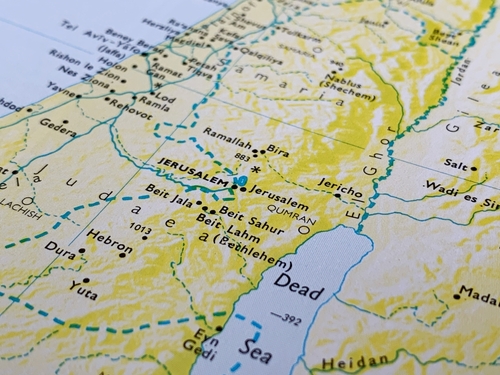
The Dead Sea, between Jordan and Israel, is technically a lake because it isn’t connected to the ocean. Its hypersaline waters, which are about ten times saltier than the ocean, make it impossible for most life to survive but allow people to float effortlessly on its surface.
4. The Black Sea
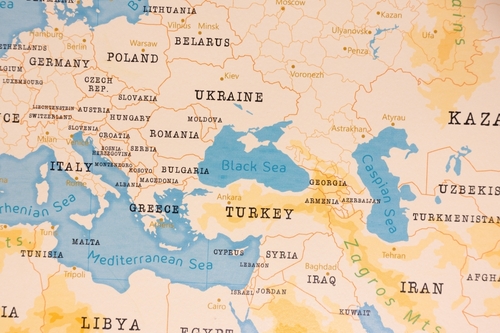
The Black Sea sits at the border between Eastern Europe and Asia, making it a crucial connection on the Silk Road trade route. Its deep waters are anoxic, meaning they lack oxygen and can’t support much life. However, it makes great conditions for preserving ancient shipwrecks, including a 2,400-year-old Greek trading vessel, the world’s oldest intact shipwreck.
5. The Caribbean Sea
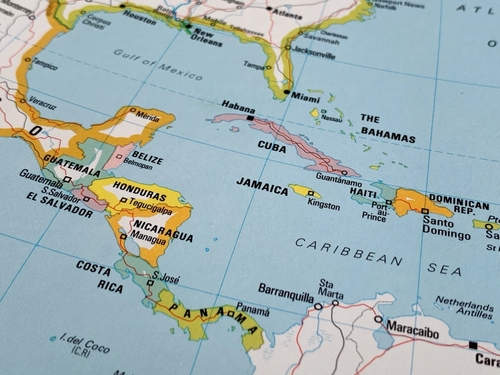
The Caribbean Sea is one of the largest seas on Earth. It’s located between the Gulf of Mexico and the northern coast of South America, and is enclosed by several island arcs, covering more than one million square miles. It’s known for its crystal-clear waters and vast coral reefs. This doesn’t just attract tourists; its oxygen-rich water supports extensive marine biodiversity.
6. The Arabian Sea
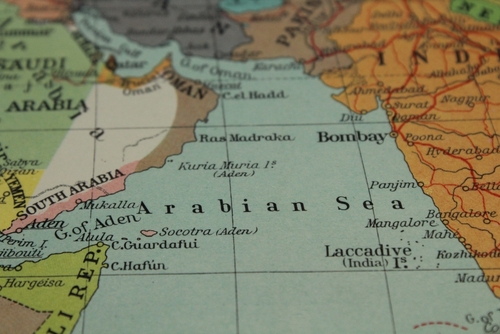
The Arabian Sea sits between India, Pakistan, and the Arabian Peninsula. It was a cornerstone of ancient maritime trade, linking the Middle East and South Asia. Today, it’s vital to the world’s energy supply as a major route for oil and natural gas exports from the Persian Gulf to East Asia, Europe, and the Americas.
7. South China Sea
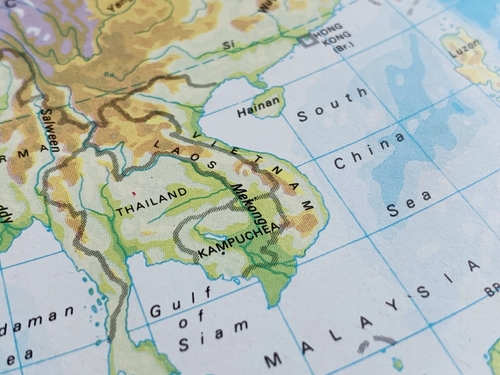
The South China Sea, bordered by China, Southeast Asia, Taiwan, the Philippines, and Borneo, is one of the world’s busiest waterways. About a quarter of the world’s maritime shipping passes through this region, and it’s rich in resources. It’s often in the headlines because of territorial disputes between China and other Southeast Asian nations, with artificial islands and militarized reefs fueling tensions.
How oceans and seas shape our planet
The oceans and seas are at the heart of Earth’s natural systems. They regulate temperatures, drive weather, and power the global water cycle.
Temperature levels
Oceans and seas play an essential role in regulating the Earth’s temperature and climate. Large bodies of water absorb large amounts of heat, which is then redistributed. Through global currents, warm water flows toward the tropics, helping to moderate temperatures around the world.
Weather patterns
Water from the ocean evaporates and rises into the atmosphere, creating clouds and causing rain, which transports fresh water across continents. Warm surface waters create more high-energy weather fronts, such as hurricanes and typhoons, while monsoons are tied to seasonal shifts in how land and sea absorb heat. Although these weather systems can be dangerous, they are also vital for sustaining ecosystems and agriculture.
The water cycle
The Earth has a nearly constant supply of water, but it’s always moving and transforming. The oceans are an essential part of that system as the world’s largest reservoirs. The freshwater rain produced by ocean and sea evaporation sustains Earth’s lakes, rivers, and groundwater.
Marine life: the ocean’s living treasures
The Earth is staggeringly biodiverse. Of the roughly 8.7 million species thought to exist on our planet, an estimated 6.5 million animal species live on land. But scientists estimate that as much as 50-80% of all life on Earth may actually live in the ocean, most of it still undiscovered. This includes everything from microscopic plankton to the world’s largest animal, the blue whale.
While it might all just look like “water,” different regions are as unique and distinct as deserts and rainforests. Different water temperatures, salinity levels, and depths support different kinds of marine life. The life that thrives in the top 200 meters of the ocean—a sunlight zone that enables photosynthesis—is different from the lower regions, which are characterized by darkness and immense pressure.
The human connection: Why oceans matter to you
From the food we eat to the air we breathe, the oceans shape our everyday life in ways we may not even realize.
Oceans and seas are central to the global economy. Fishing provides the primary source of protein for billions of people around the world, 90% of all goods are transported through shipping, and tourism thrives in coastal regions. Oceans also represent untapped energy sources, with seabeds holding oil and gas reserves, and wind turbines are increasingly being built at sea.
Even if you live far from the coast, the oceans still affect your daily life. It influences temperature and weather patterns, shaping rainfall and growing seasons, which in turn impacts food prices and availability.
Protecting our blue planet
Protecting the seas and oceans means protecting the planet. The choices you make every day can help preserve these vast ecosystems for generations to come.
There are things you can do on an individual level to make a difference.
- Reduce plastic consumption. Avoid single-use plastics, bags, and packaging that often end up in our waterways, where they break down into harmful microplastics.
- Follow proper waste disposal so that plastic and other waste don’t end up at sea.
- Use water wisely to reduce water waste, and choose eco-friendly products to reduce the amount of contaminants being flushed into the ocean.
- Choose sustainably sourced seafood to support responsible fishing.
- Lower your carbon footprint by reducing car use and optimizing home energy consumption.
- Learn about and share the challenges facing our oceans, and support ocean conservation initiatives.
Learn more about what you can do from the National Ocean Service, and find recognized ocean conservation organizations to support. Every small action adds up.
Understanding our blue planet: a call to appreciation
Earth is often called the blue planet because our oceans and seas are the lifeblood that sustains life around the globe. What happens at sea affects life in every corner of the planet, and as citizens of Earth, we’re all responsible for protecting our oceans and seas. The first step is simply asking: What can I do?
FAQs
What makes an ocean different from a sea?
Oceans are large bodies of water that separate continents, like the Pacific and Atlantic Oceans. Seas are smaller bodies of water, connected to the oceans but partially enclosed by landmasses. Examples include the Mediterranean Sea and the Caribbean Sea.
Which ocean is the largest and deepest?
The Pacific Ocean is the world’s largest and deepest, covering roughly 32% of the world’s total surface. Its average depth is around 4,000 meters, and its deepest point sits at almost 11,000 meters.
How do oceans affect the weather where I live?
Significantly. Oceans act as giant heating systems by absorbing sunlight and distributing its heated waters via currents, which helps prevent extreme temperature swings between summer and winter. Evaporation from the ocean is also the source of rain and other weather systems that fertilize land.
Why are some seas saltier than others?
High evaporation and low rainfall levels leave the concentration of salt in the remaining water high. Fresh water running into seas through rainfall, river runoff, and polar ice melting dilutes the level of salt in the water.